Once
- This document guides users on how to schedule a dataset using the “Once” option in AIV.
Schedule Dataset using Once: This video contains how to Schedule Dataset using Once in AIV.
Scheduling Dataset in the AIV based on Once:-
- To schedule the dataset for a one-time execution within an hour, day, week, month, or year, follow these steps :
-
Sign in to AIV with your provided credentials.
-
Navigate to the Dataset section by clicking on the Hamburger Menu, then selecting MasterData, and finally Dataset

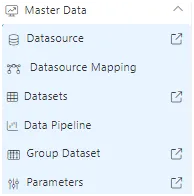
-
User will see the window as below:
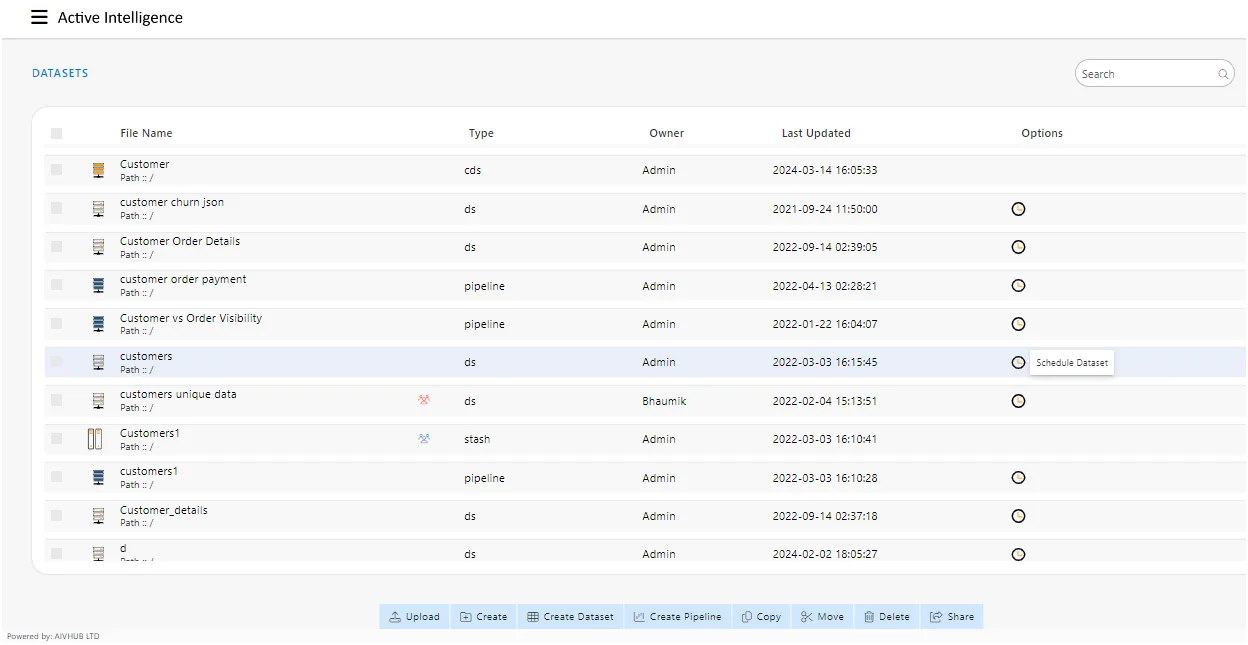
-
We’ll utilize “customers.ds” in the dataset section for comprehension.
-
you can download “schedule.zip” from the provided link by clicking on it or copying the link into your web browser’s address bar and pressing Enter. If you have any further questions or need assistance, feel free to ask. schedule.zip.
-
Follow this link
& upload the downloaded zip into AIV as shown. -
Schedule your dataset by clicking on a , which will open the following dialog box.


-
Navigate to the schedule tab as shown. By default, the Schedule Type will be set to Time, which can be changed to Event from the drop-down menu.
-
Choose Once in the Frequency radio button.
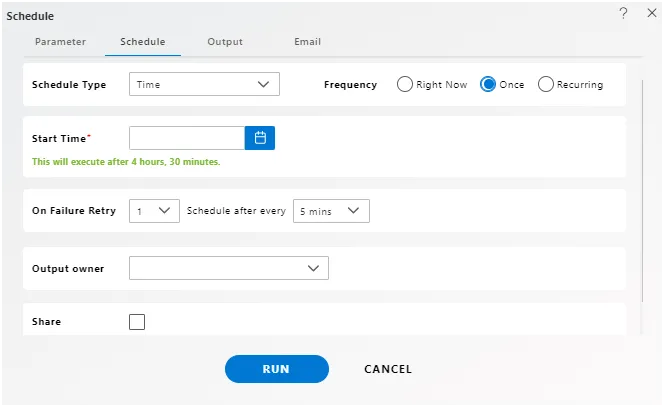
-
Click on the icon as shown in the image above and choose the time as per your requirement from the drop-down menu.
-
sers can also select the time by clicking on the calendar icon, as depicted in the image below.
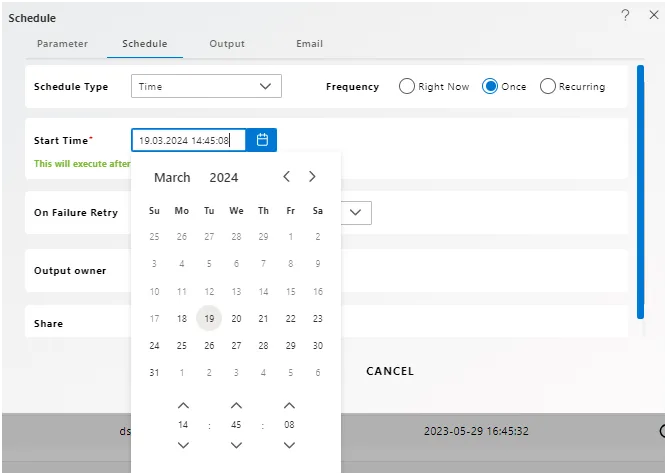
-
You can also specify how many times the dataset should re-execute in case of failure and the interval from the drop-down menu shown in the figure. For example, in our case, the dataset will be executed twice in case of failure within 5 minutes.
-
Click on “Share” if you want to share the dataset with other users or user roles.
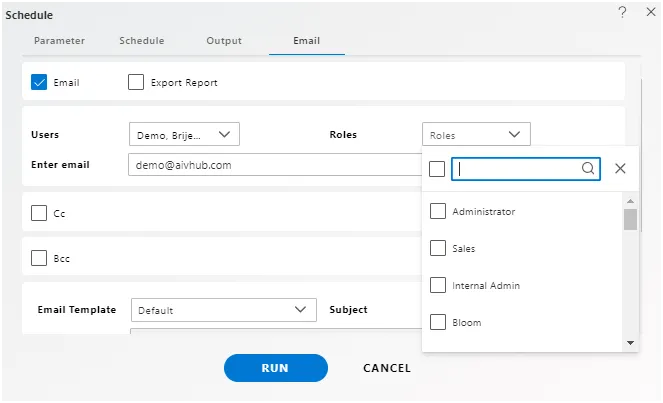
-
Here the Visibility is kept Internal for this example.
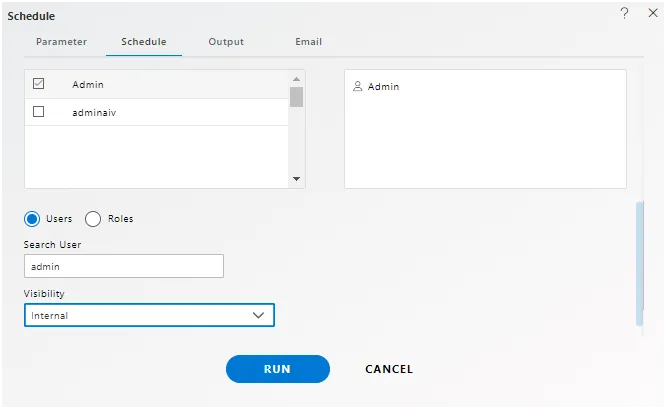
-
“Send Reminder” specifies how many reminders should be sent.
-
After days specifies after how many days should the Reminder be sent again.
-
Approved by specifies the user name, which is Admin in our case.
-
To specify the output, navigate to the output tab as follows.
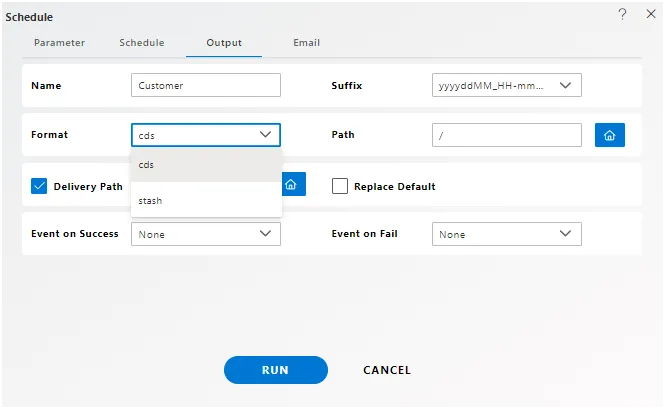
-
Enter the desired name for scheduling the dataset in the “Customers” text area, and provide an optional suffix if needed.
-
Select the format cds or stash from the dropdown menu.
-
You can also specify an event on the success or failure of the dataset, which will trigger an event and execute all the datasets waiting for the event. We will discuss this in detail later on event scheduling.
-
You can also specify the delivery path on your computer where the dataset will be downloaded, as follows.
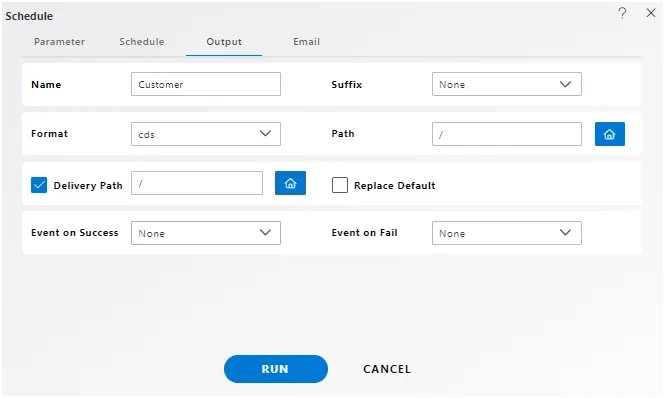
-
Enter your email address/addresses to which you want to send the dataset via email :

-
Select the users and roles from the drop-down menu.
-
Enter the email address(es) to which you want to send the dataset via email.
-
Select a template from the dropdown menu. We have chosen the Default template for our example.
-
Click on run button in order to schedule the dataset

-
In case of any further help, the user can click on the icon to access the AIV HUB help documents.

-
If the user is not satisfied and wants to cancel the schedule request, he can do this by clicking on the cancel button next to help or by clicking on button next to the icon.

-
The dataset is scheduled, and a cds file is created. Users can view the schedule request in the Request section of the AIV application. This section shows all reports,datasets,alerts that have completed, are running, waiting for an event, or scheduled. In case of dataset scheduling failure, an error is also displayed on this page.
-
After scheduling the dataset using “Once,” the user will see the scheduled dataset in the Dataset section.
-
It will be saved in the dataset section as the “[Dataset Name].cds”. For this example, it will be saved as “Customers.cds” in the Dataset section.